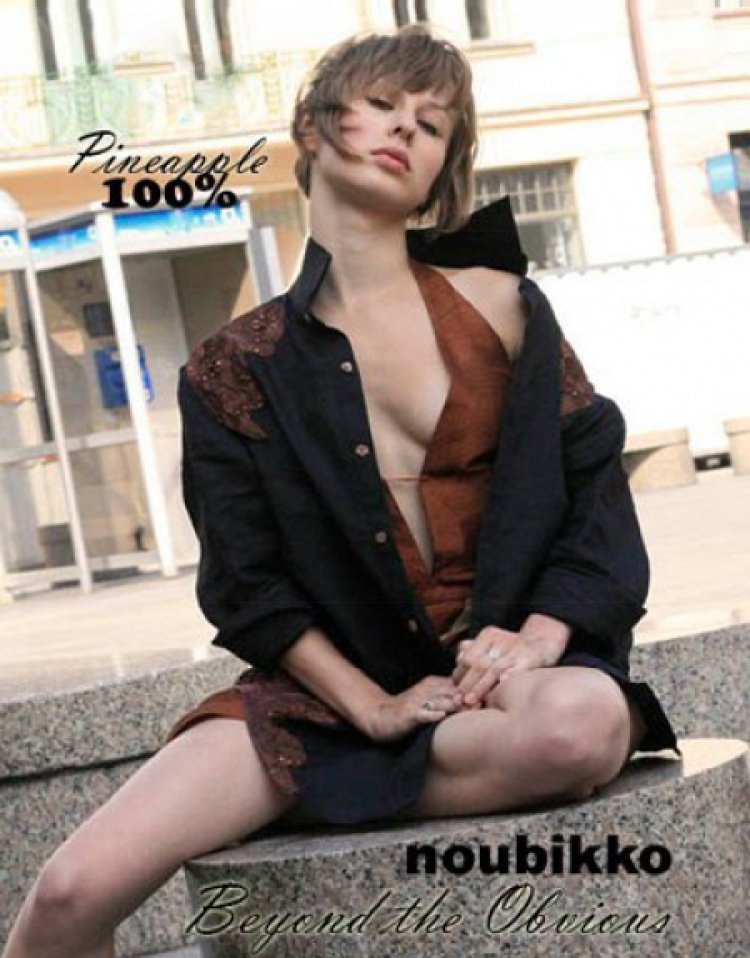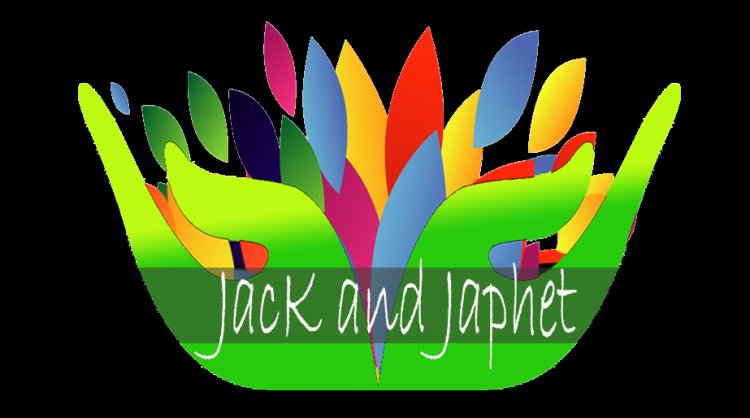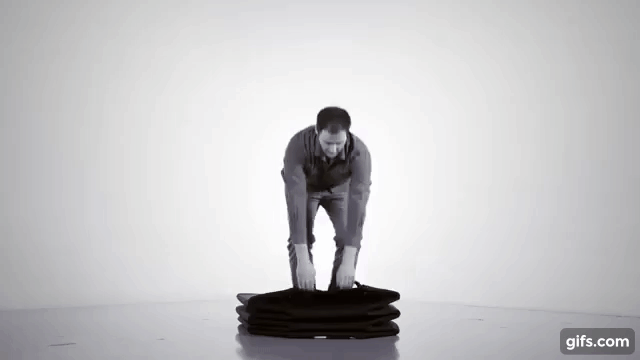Walking Between Two Worlds, With Designer And Palawa Woman Sarah Lynn Rees
Today we’re wrapping up our inspiring and informative ‘Words from the Wise’ series, with Sarah Lynn Rees, Palawa/Trawlwoolway woman, lecturer, curator, and lead Indigenous advisor at architecture firm Jackson Clements Burrows Architects. Through studying architecture, working in remote communities, and an understanding of her own heritage – Sarah’s practice is rooted in the social, cultural, political and ethical ramifications of design. In this fascinating conversation with recent Monash Art, Design + Architecture Masters of Architecture graduate, Declan Murphy, Sarah talks about the importance of designing the built environment with Country, culture and community front of mind.
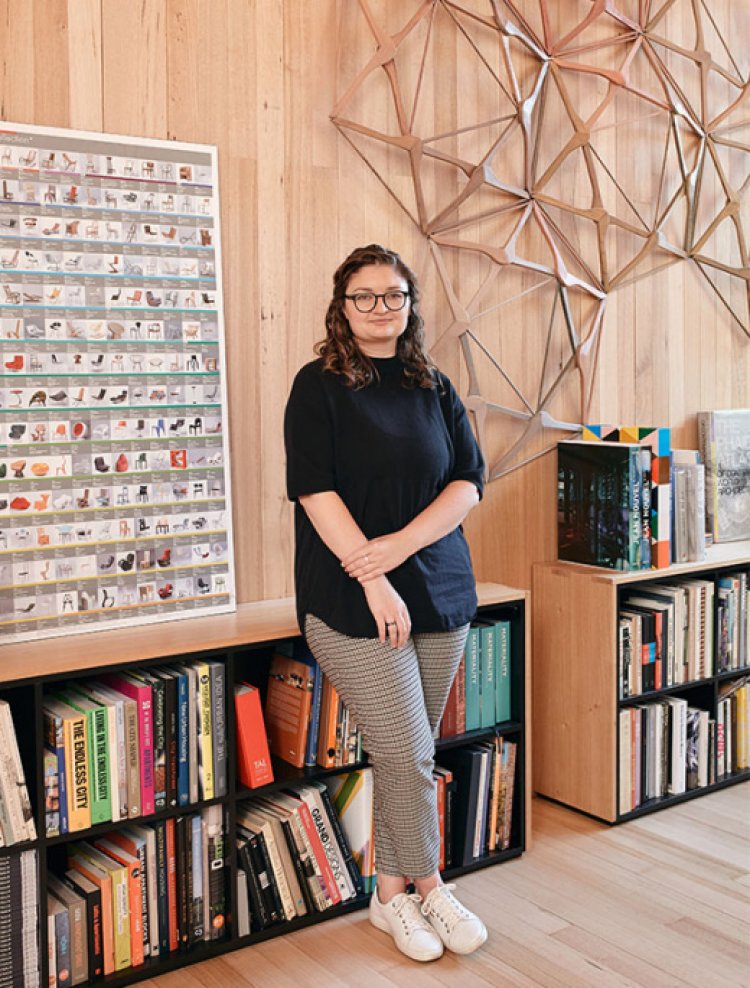
Walking Between Two Worlds, With Designer And Palawa Woman Sarah Lynn Rees
Words From The Wise

Sarah Lynn Rees and Declan Murphy at the JCB office. Photo – Amelia Stanwix for The Design Files.

Designer, curator, academic and Palawa woman, Sarah Lynn Rees. Photo – Amelia Stanwix for The Design Files.

Sarah works as a designer and lead Indigenous advisor at JCB. She emphasises consultation with Traditional Custodians and an understanding of Country as necessary background knowledge before conducting architectural design work. Photo – Amelia Stanwix for The Design Files.

Her work involves computer-based programmes… Photo – Amelia Stanwix for The Design Files.

… but also person-to-person collaboration! Photo – Amelia Stanwix for The Design Files.

‘We need to listen before we speak, observe before we draw and remember that the built environment is more than just designing for humans,’ says Sarah. ‘We have a fundamental responsibility to all living things. Perhaps the biggest difference is what each of us consider to be alive.’ Photo – Amelia Stanwix for The Design Files.

The tactile nature of architecture and design is what appeals to Sarah – it’s the real world! Photo – Amelia Stanwix for The Design Files.

‘The idea of creating built environments was a fascination for me from a very young age,’ says Sarah. ‘I enjoy the complexity of it, the drive to always find a better way, then the decision to move from paper to the workshop and watching the lines come to life in real time. It was an incredibly affirming moment the first time I saw something I drew come to life as a built form.’ Photo – Amelia Stanwix for The Design Files.

The light-filled JCB office. Photo – Amelia Stanwix for The Design Files.

‘The most important things are acting with integrity, removing egotism, listening, finding common ground, and deleting jargon from your vocabulary,’ says Sarah. Great advice! Photo – Amelia Stanwix for The Design Files.
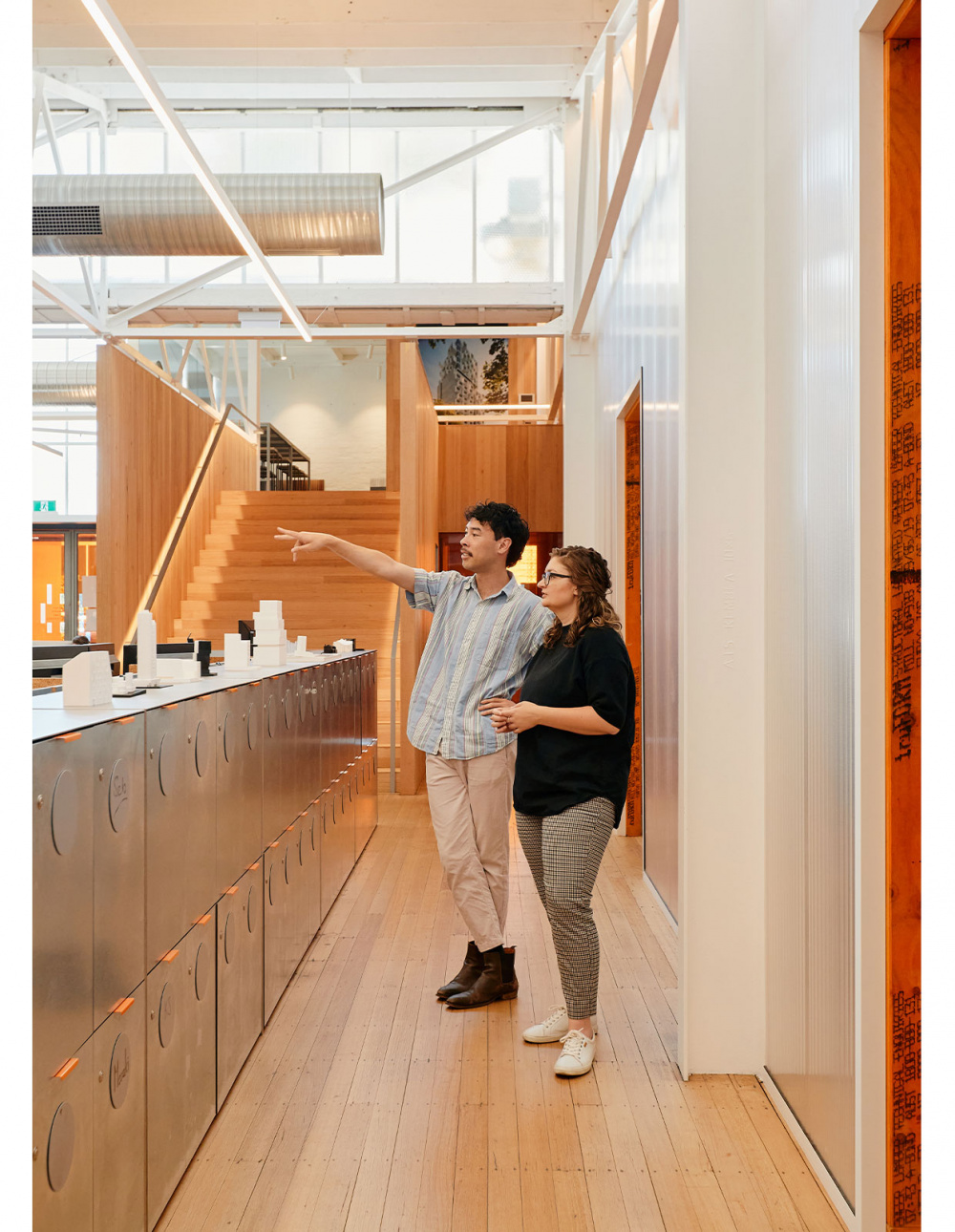
Sharing wisdom with the next generation is a big part of the job! Photo – Amelia Stanwix for The Design Files.
Place and personal experience are a rich source of design inspiration in architecture, and Sarah Lynn Rees, lead Indigenous advisor at Jackson Clements Burrows (JCB) and lecturer at Monash University, is an exemplar of utilising these principles.
Sarah has a wealth of knowledge that comes from valuing the opportunity to listen to others, and observing her surrounding environment. She shares this attention to community, culture and Country through her design work, but also through special projects that enhance engagement between her two worlds, such as the BLAKitecture talk series she has curated for MPavilion in March.
Being a recent Master of Architecture graduate from Monash Art, Design + Architecture, I was excited about the opportunity to listen and learn from such a strong presence in the field. I’m fascinated by the diverse engagement that Sarah has with people in and out of the industry, and the way these connections inform her design work. It’s her ability to project a voice that enlightens my own thinking about architecture.
Speaking with Sarah amplified a simple truth for me: architecture thrives when we share our experiences with others.
Hi Sarah! Let’s get straight into it, What did you study at uni and why?
On the surface you could say the reason I chose to study architecture is the classic cliché: my dad is a builder. However, I am far more interested in understanding the fundamental reasons why we do what we do. Half of my childhood years were spent traveling around Australia in a four wheel drive and caravan, the other half growing up in a house that was being constructed around me. Quite literally. Dad and I recently went through some old photographs, and he showed me how he built the new house around the old house before dismantling it.
The idea of creating built environments was a fascination for me from a very young age. I particularly loved watching the design thinking process, the imagining of 3D realities, drawn and redrawn on reems of paper. I enjoy the complexity of it, the drive to always find a better way, then the decision to move from paper to the workshop and watching the lines come to life in real time. It was an incredibly affirming moment the first time I saw something I drew come to life as a built form.
Years later, the fundamentals remain; the beautifully complex problem to be both designed and solved. However, the drivers are different. The reality that I now get to spend my days bringing together Country, culture and community with design was not even a conversation when I chose architecture.
What were your first moves after graduation?
The plan was to take a year out and work full-time before starting my Masters. If I’ve learned anything it’s that whatever plan you make, it will change. Shortly before I started working, I received an email from student services suggesting I apply for the Charlie Perkins Scholarship to study at Cambridge or Oxford in the UK. If I’ve learned anything else, it’s that there is no harm in trying and putting yourself out there when an opportunity comes along. I got in, and left for the UK.
The masters degree is a little different at Cambridge; it’s described as a sandwich. You propose a topic you are interested in studying and that becomes the project you work on for two years. The first third and the last third of your time are spent at uni and the middle third is spent undertaking fieldwork relevant to your topic. I chose to study government housing programs in remote Aboriginal communities and had the opportunity to spend six months living, working and studying in Yuendumu, a Walpiri community about 300km northwest of Alice Springs.
My time there and the people I met taught me too many things to list, but perhaps the most important ones: community is life, and that we must maintain our values no matter what life throws at us.
At the completion of my masters, I had four months left on my UK student visa, which allowed me to work, so once again I said, “no harm in trying”. I remember sitting down to a list of 100 practices, opening every single website in its own tab, and by process of elimination closed every practice that didn’t interest me or align with my values. I ended up with two. I sent emails to the directors of both, got a call the next day, an interview the day after, and a job on the spot.
I ended up working with the late Will Alsop in his practice aLL Design for two years. Design has never been so fun. Imagine team meetings with a couple of bottles of wine, some classical music, a paint wall and genuine equity of voice regardless of experience. Will was a teacher and he taught me that I didn’t have to fit the mould that had been impressed upon me.
Leaving was incredibly difficult, but I wanted to come home. Will hand wrote me a reference letter, which in true Will form ended with the words, ‘Sarah is belligerent, in a good way.’
Upon returning to Australia I tried a few different things, architecture, teaching, research, consulting, curating public talks, not quite sure how I fit into the world anymore, but knowing that I wanted to find ways to Indigenise the built environment.
Ultimately, I’ve ended up back where I started, with the people who first gave me an opportunity way back in 3rd year, JCB. I am now an Associate, and run our Indigenous Advisory sector. Everything I do is geared towards Indigenising the built environment. Practice, Lecturing and Indigenising the curriculum at Monash, curating a talks series called BLAKitecture at MPavillion, Co-chair alongside Paul Memmott of the AIA First Nations Advisory Working Group.
Tell me something you didn’t know about the industry before you worked in it.
Everything!
How do you approach the beginning of a new project?
By asking whose Country it resides within and seeking to understand the values and rights of that Country and how, at a minimum, we can do no more harm to her, and ideally when we can work with Traditional Custodians to respect, honour, and celebrate her.
Sometimes we have the privilege to work in partnership with and learn directly from the Traditional Custodians, other times the realities of clients, budgets and timeframes don’t allow this. Regardless, every project for me starts with respecting the Country it will reside within, in as many ways as possible.
What strategies do you employ to communicate design ideas to people without a design background?
Remove your own egotism. Unless you are designing your own home (and even then, you are still designing on someone’s Country that most likely is not your own), you aren’t designing for yourself.
We need to listen before we speak, observe before we draw and remember that the built environment is more than just designing for humans. We have a fundamental responsibility to all living things. Perhaps the biggest difference is what each of us consider to be alive.
Regardless, the most important things are acting with integrity, removing egotism, listening, finding common ground, and deleting jargon from your vocabulary.
You are passionate about the Indigenisation of the built environment – can you briefly explain this, and how your advocacy in this space plays out in your working life?
Well firstly and fundamentally, it is not just my advocacy, it is the advocacy of generations of Indigenous peoples that fought to have a voice and stand up for their values in a world that was specifically designed to silence and remove them. Their strength and perseverance has forged paths for the community of Indigenous built environment practitioners of now, who are working every day to make Country, culture and community real for our profession.
In terms of how this plays out in my working life; separating cultural responsibilities, identity and values from one’s profession is something you can be conditioned to do, but it’s not sustainable. I know that I am very fortunate to live in this time, to work with people who listen, and who support people like me to have time to develop and articulate what bringing an Indigenous and non-Indigenous world together means for the way we practice architecture.
It’s not uncommon to hear Indigenous people say they walk in two worlds. This is very true for me, but in some ways that’s what keeps me going, bringing these two worlds closer together, so that those who come after us don’t have to, as our ancestors did for us.
What about architecture keeps you curious?
Everyday is different, everyday brings a new challenge, everyday there is something to learn about the world and yourself, everyday we have the opportunity to contribute to creating a better future.
If you asked the 8-year-old in me… everyday there is a possibility that a line that was drawn will one day soon become a reality.
Where do you find inspiration?
Country.
What’s the best piece of professional advice you’ve ever been given?
Question everything.
Do you have any kernels of wisdom for emerging graduates?
Take the time to understand who you are, what your values are, where you come from, and your identity. Then question it. Make sure it’s really yours, and not just something your learned or inherited without understanding why. This process helps you to understand what your biases are (we all have them) and stop them from preventing you from listening to someone who’s reality is different to yours. It will make you a better designer and a better human.
Declan has just completed a Master of Architecture at Monash Art, Design + Architecture. Learn more about the course here.









